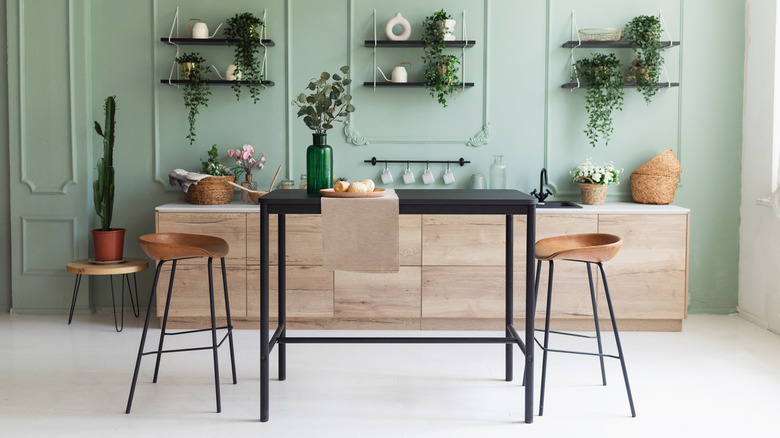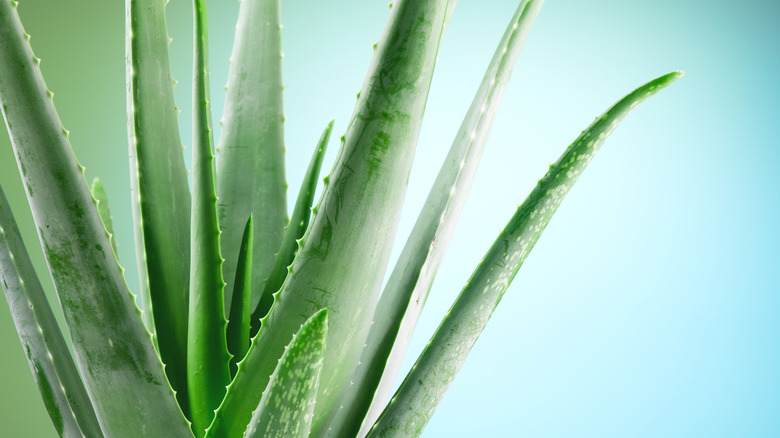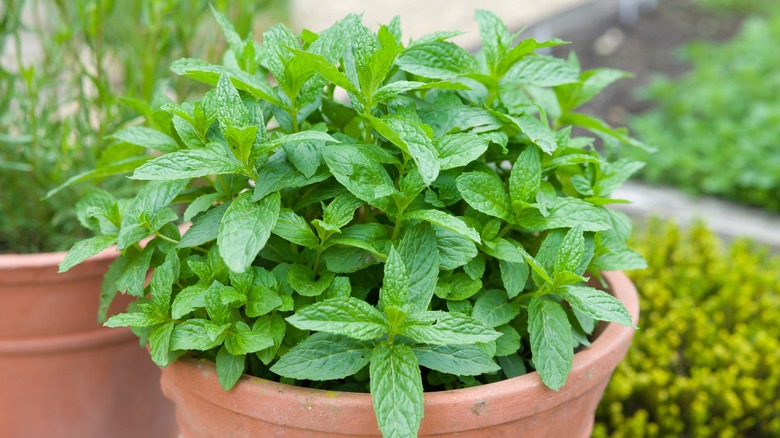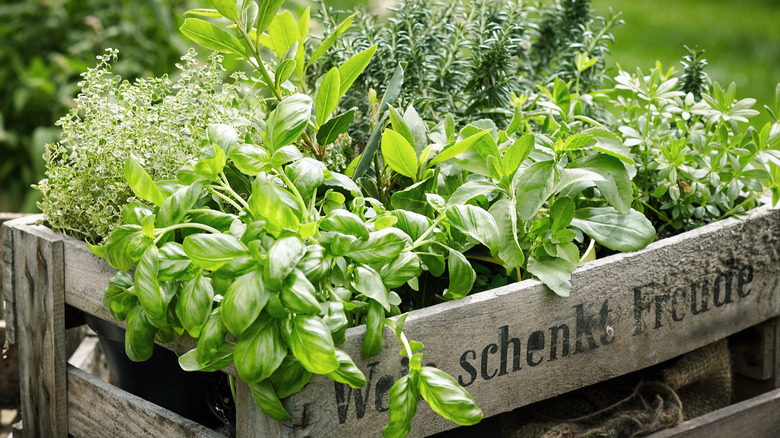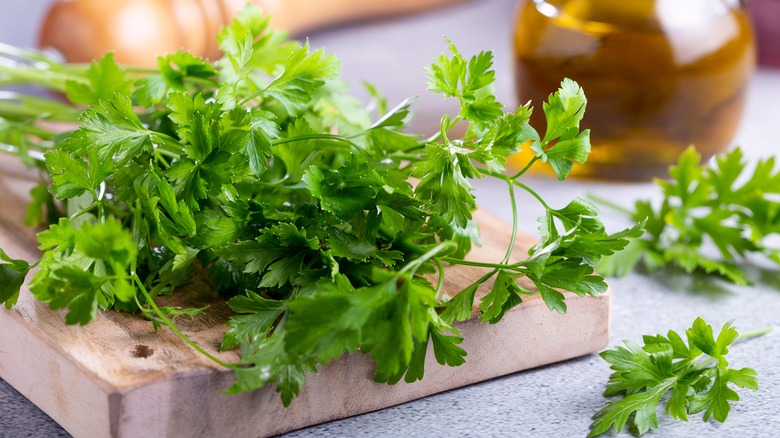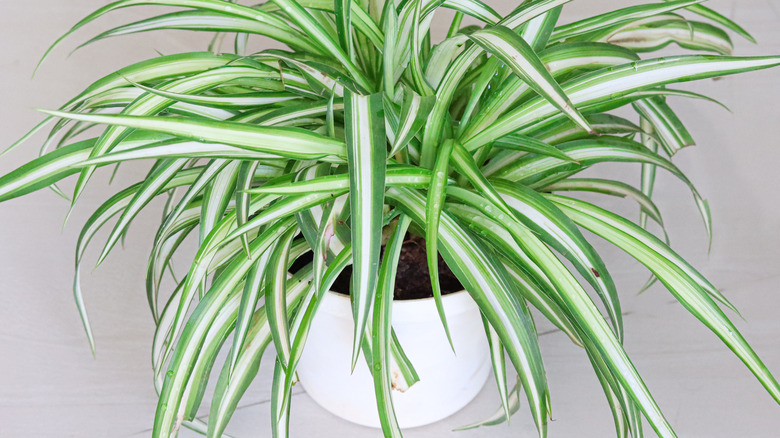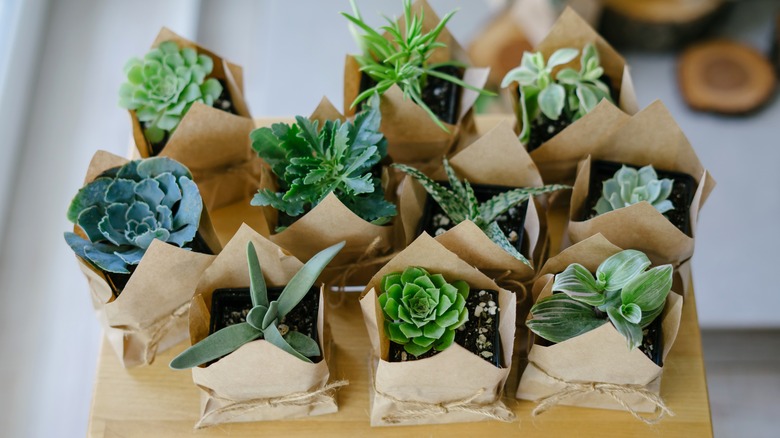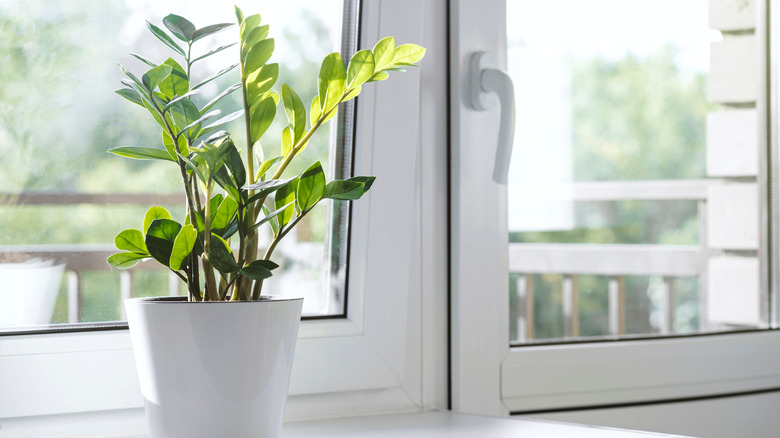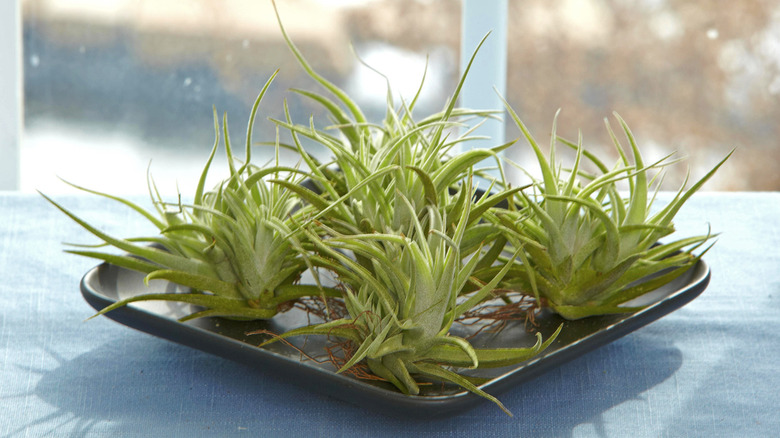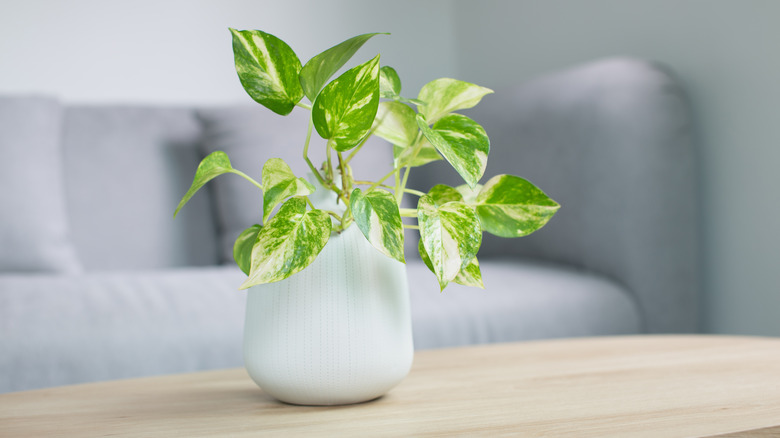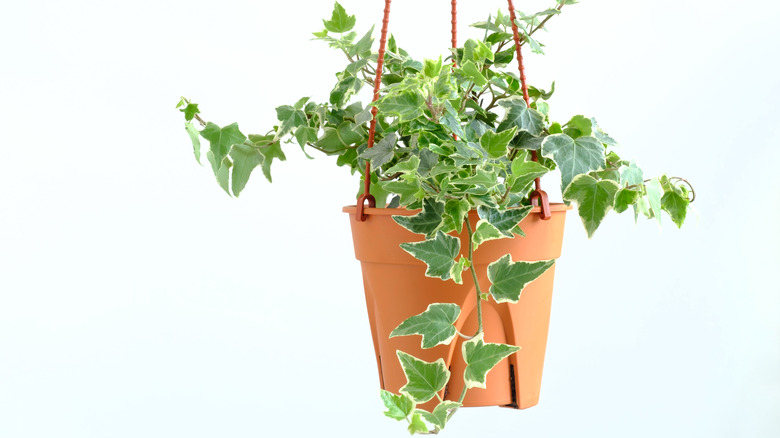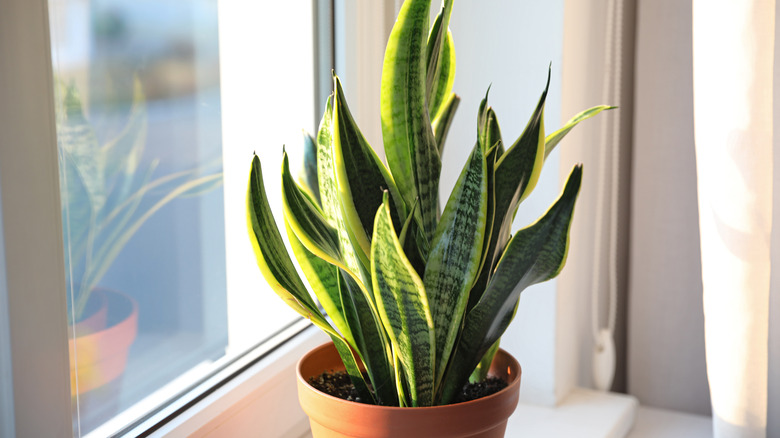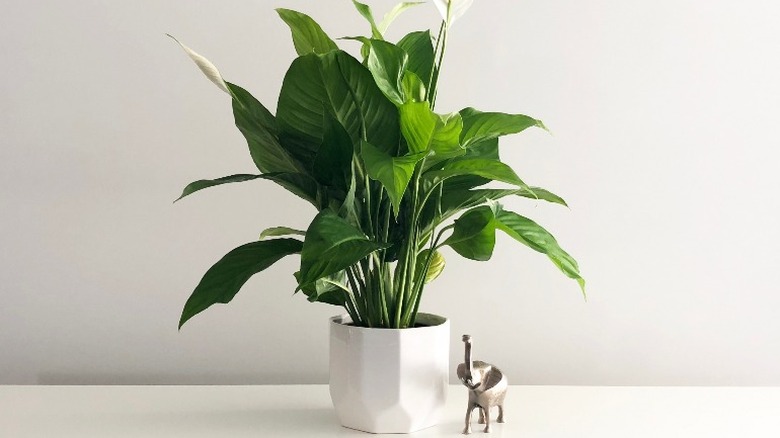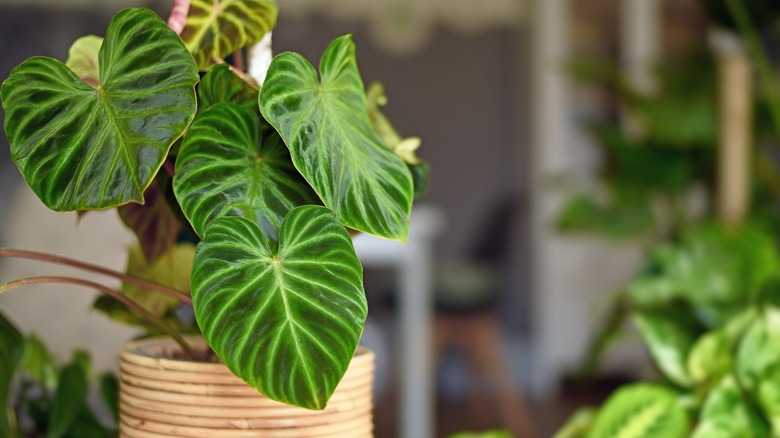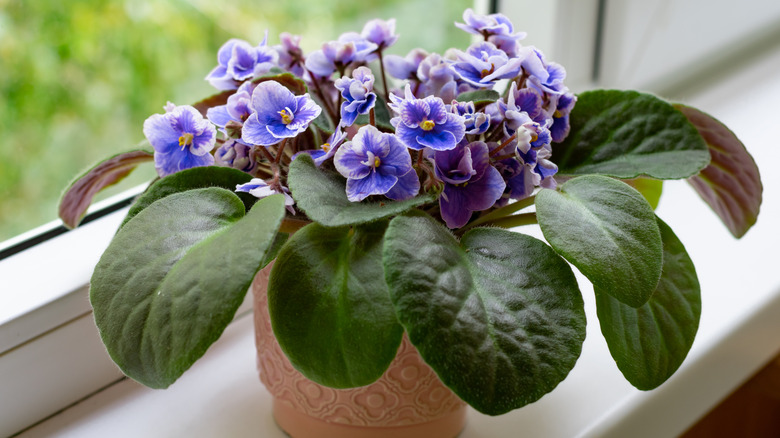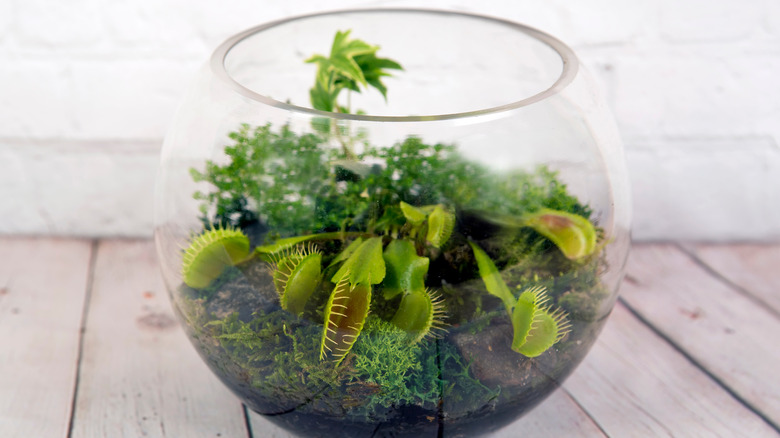The 15 Best Plants You Should Have In Your Kitchen
Whether or not you have a green thumb, houseplants can offer a number of benefits, including possibly helping to reduce your stress levels and boost your immune system (via Healthline). In addition to adding some life and brightness to your space, plants can be especially helpful in certain areas of your home. In particular, when kept in your kitchen — houseplants can not only help to purify the room's air but can deter pests and even inspire you to get creative and try some new things.
And, while there may be a few downsides to consider when it comes to houseplants in your kitchen, there also seems to be an endless selection of plants to choose from if you do decide to add them to your kitchen space. However, some houseplants simply outrank others due to their variety, versatility in the kitchen, and ideal growing conditions and care. But which plants are truly the best for your kitchen? Here are our 15 picks.
1. Aloe vera
Thanks to its medicinal properties, aloe vera (Aloe barbadensis Miller) continues to be among the most popular houseplants. In fact, a data analysis by Flowercard of Google trends found that aloe vera has been the most popular houseplant (in search) since 2017.
As for how to care for an aloe plant, they tend to be hardy plants that tolerate infrequent watering; this said, make sure it's planted in a terracotta pot with a well-draining succulent soil mix (via Good Housekeeping). After potting your aloe, thoroughly water it and place it in a bright and sunny part of your kitchen so it can get at least six hours of indirect sunlight.
2. Mint
There's no denying herbs are some of the best plants to have in your kitchen, but some herbs prove a better fit as far as variety and versatility (via Fearless Dining). Take mint (genus Mentha), for example. This cool herb has roughly 25 varieties, and as noted by WebMD, is perhaps best known for its positive effect on digestive health.
When growing mint indoors, Bonnie Plants recommends potting the herb in well-draining soil that's consistently watered and storing it in a sunny area of your kitchen where direct and indirect sunlight are both plentiful and where there's space for the plant to spread out.
3. Basil
Like mint, basil (Ocimum basilicum) is another versatile herb that can often be found in kitchens, according to Fearless Dining. Deriving from its scientific name in Greek, basil is considered to be the king of aromatic herbs and has multiple variations that can be used in a number of cuisines, including Italian and Thai.
Basil should be potted in a vegetables and herbs soil mix, watered evenly, and placed in a warm space in your kitchen that has direct and indirect sunlight so your basil plant can get at least six hours of direct sunlight each day (via Martha Stewart).
4. Parsley
Another great herb option for your kitchen is parsley (Petroselinum crispum). Per The Kitchen Herbs, this plant has a similar appearance to cilantro, but is the more versatile of the two and comes in four main varieties, according to Little Yellow Wheelbarrow. They are curly and flat-leaf (best known as Italian parsley), Japanese parsley, and Hamburg parsley — all of which have different uses in the kitchen.
Make sure your parsley plant is potted in well-draining, nutrient-rich soil, consistently watered, and if grown in warm climates, is placed in partial shade (via Bonnie Plants). If not, keep it in an area with full sun.
5. Spider plant
Not only are spider plants (Chlorophytum comosum) easy to care for, the plants were recognized by NASA due for their air-purifying qualities, according to the Old Farmer's Almanac.
A perfect addition to your kitchen, a spider plant should be potted in a well-draining potting mix, watered once a week, and placed on a shelf or hung in a basket in a portion of your kitchen with plenty of bright, indirect sunlight, per Bob Vila. The only downside to spider plants is that they're known to grow quickly so be prepared to repot your plant every year.
6. Succulents
An overarching group of plants, succulents are common, low-key houseplants that can tolerate dry conditions and won't take up very much counter space in your kitchen, according to The Practical Planter. As for how to care for your variety of succulents, make sure your plants are getting enough direct sunlight by keeping them near a window, as well as rotating them frequently, as they tend to lean toward the sun (via Architectural Digest). When watering a succulent, water the soil directly rather than misting them, as misting can cause a whole host of problems, including moldy leaves and brittle roots.
7. ZZ plant
A great option for kitchens with low light in need of some drama and brightening up, the ZZ plant (Zamioculcas zamiifolia) may just be the plant for you, according to Plant Care for Beginners.
A tolerant plant in terms of lighting and watering, per The Sill, the ZZ plant should be potted in an all-purpose potting mix with a pH range between 6 and 7 and can grow up to 3 feet tall. Make sure to keep your ZZ plant and all other houseplants out of reach of small children and pets as many houseplants aren't pet-friendly.
8. Air plants
Unlike other houseplants, air plants (genus Tillandsia) don't necessarily require soil to thrive in your kitchen, drawing their nutrients from the air instead (via My Domaine). Also known as epiphytes, air plants should be kept in warm areas of your kitchen like window sills or mounted on your walls in hanging pots where the plants can get plenty of bright, indirect sunlight.
Often seen in terrariums, air plants should be watered every one to two weeks in the morning based on the plants' needs. When caring for air plants, consider the air's quality and temperature depending on the season (via Pistils Nursery).
9. Pothos
Like the aloe vera plant, the pothos plant (Epipremnum aureum) or Devil's Ivy, is often one of the most popular plants to have in a kitchen. Able to tolerate inconsistent lighting and watering, the pothos plant should be planted in a well-draining potting mix and can help remove toxins from the air and filter water if needed (via The Sill). However, while this vining plant can be an ideal addition to your kitchen and home, its vines do require pruning — especially if added to a kitchen counter, according to The Practical Planter.
10. English ivy
Another great hanging-plant option for eat-in kitchens and bright sunrooms, English Ivy (Hedera helix) is a versatile plant that's adaptable to most lighting situations. Indoors, you can find them in baskets or even hanging off shelves (via House Beautiful).
English Ivy, as well as other ivy varieties, should be potted in a nutrient-rich, houseplant potting mix that is kept evenly damp, but not soggy, according to Clemson's Home & Garden Information Center. The plant should also be misted regularly to prevent its leaves from drying out, as well as pruned to maintain the right size and shape.
11. Snake plant
One of the best houseplants for those who don't have a green thumb or want a bit of character in their kitchen, the snake plant (Sansevieria trifasciata) is easy to maintain and can make quite a statement.
Available in a handful of varieties, according to Joyus Garden, the snake plant should be planted in a free-draining succulent mix and watered infrequently — every two to eight weeks — depending on how big your plant is and when its soil dries out. Bob Vila also recommends placing your snake plant in your kitchen's corners so it isn't oversaturated by the sunlight.
Note: Snake plants are toxic to both cats and dogs, per the ASPCA.
12. Peace lily
Not only is the peace lily (genus Spathiphyllum) eye-catching with its dark green leaves and white tropical blooms, the flowering plant can live for years based on its quality of care, according to Country Living. The tropical plant, which isn't actually a lily, can grow up to 4 feet tall and regularly blooms in indirect sunlight.
Peace lilies also shouldn't be placed in drafty rooms due to their temperature sensitivity. For the best results, plant your peace lily in a pot with good drainage and porous potting soil. Water peace lilies regularly (via Miracle-Gro).
13. Philodendrons
Native to Central and South America, philodendron plants (genus Philodendron) have become a popular group of houseplants over the years and belong to the same family as the pothos plant, Araceae (via MasterClass). Offering a large selection of plants to pick from, including the ever-popular heartleaf philodendron, philodendrons can bring a calming, tropical vibe to your kitchen.
To care for them, The Practical Planter recommends plenty of space for your plant, especially if it's a vining philodendron, and weekly waterings. You should also regularly prune and fertilize your philodendron and keep an eye out for pests.
14. African violet
If you're looking for a flowering plant that can add color to your kitchen, consider the African violet (Saintpaulia ionantha). While it's known to be somewhat of a finicky plant, with the right care, its flowers, which come in a variety of purples, can last year-round (via My Domaine).
To maintain its blooms, the Old Farmer's Almanac recommends planting your African violet in small pots with loose, well-draining soil, watering it carefully to avoid stem and leaf rot, and placing it in indirect light and/or by northeast-facing windows.
15. Venus fly trap
An unexpected and quirky plant, the Venus fly trap (Dionaea muscipula), may seem like a handful, but it can be a great addition to your kitchen during the spring and summer. In particular, the carnivorous plant can help rid your home of annoying pests and if cared for properly, can thrive year-round (via Bob Vila).
Native to humid, coastal marshlands, the Venus fly trap enjoys damp, acidic soils. Because of this, Better Homes & Gardens recommends avoiding regular potting mixes and watering your Venus fly trap with rainwater or distilled water instead of tap water.
